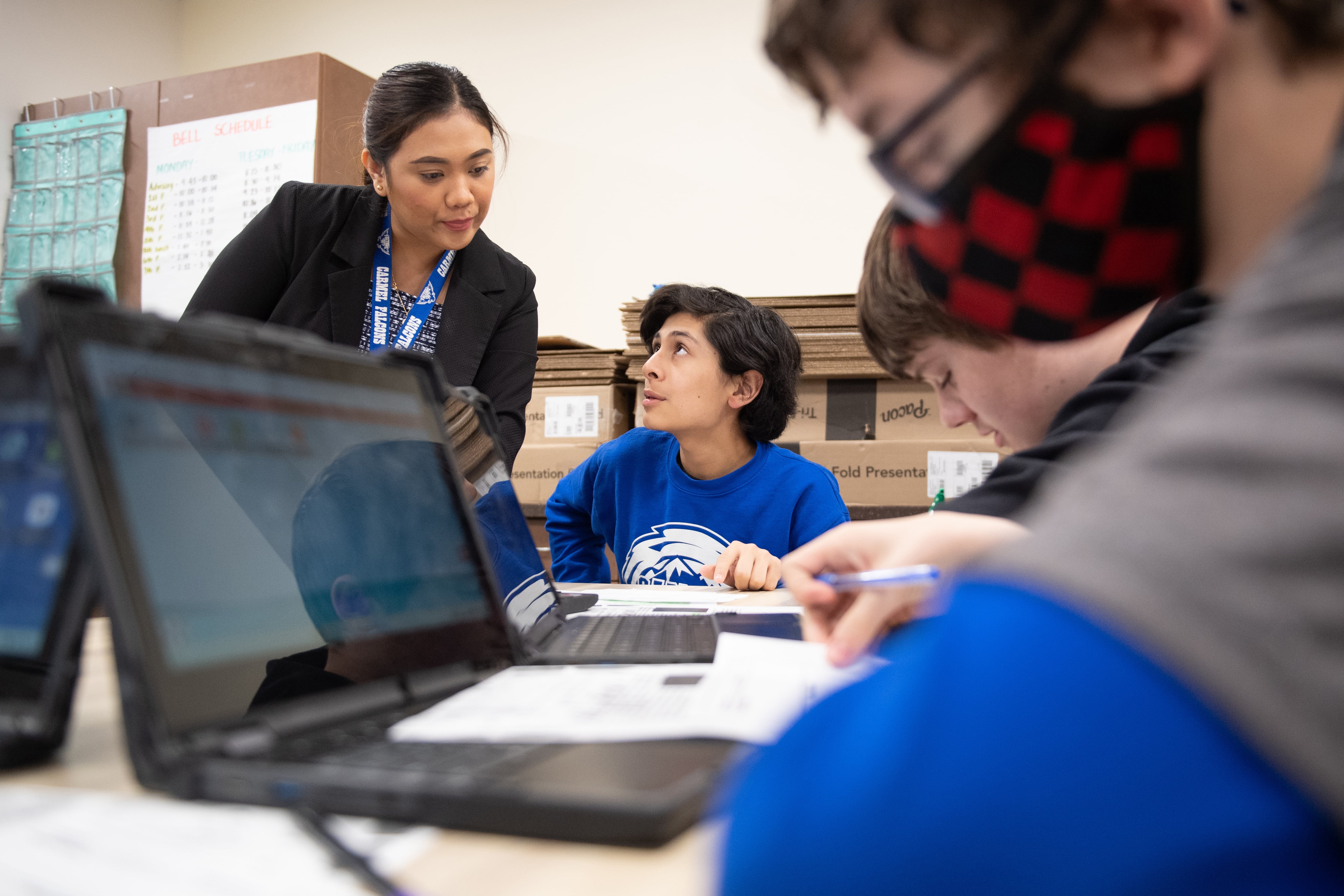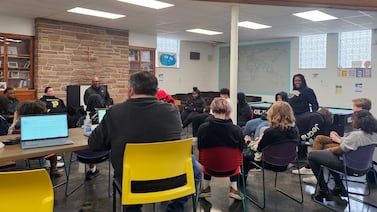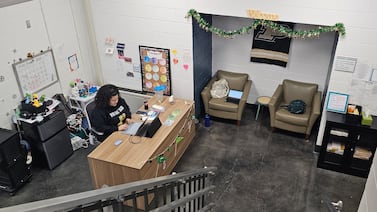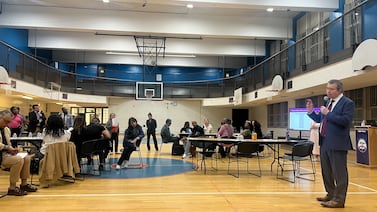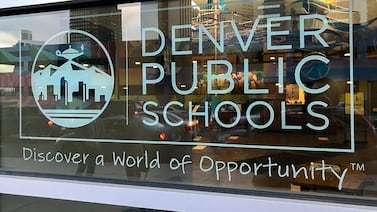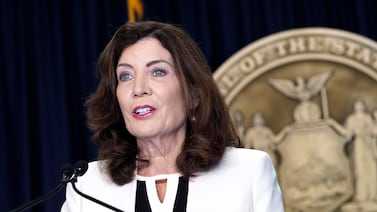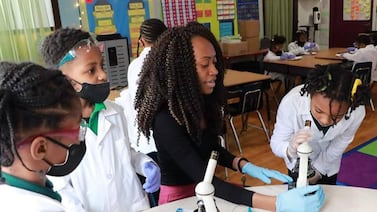The day Nicole Oyson interviewed for a science teacher job at Carmel Community School in Colorado Springs last July, she woke at 3 a.m. to get ready, apply makeup, and put on a blouse and blazer over shorts.
At 4 a.m., from the town of Mabinay in the Philippines, she nervously joined a video call with two interviewers in Colorado, where it was the middle of the afternoon. By 4:30 a.m. her time, Oyson had a job offer.
“I was shocked,” she said. “I was about to cry when I was accepting it.”
Oyson is among a growing number of international teachers filling vacancies in some Colorado school districts facing a dearth of homegrown applicants, especially in areas like math, science, special education, and bilingual education. District leaders say international educators help plug holes in the teacher pipeline and expand students’ cultural horizons.
Oyson, who previously taught for five years in the Philippines, said when she arrived at Carmel Community School last September, she showed her eighth grade students a PowerPoint presentation about her country — the flag, food, culture, and the beaches.
Students said, “If I lived near that I’d go swimming every day,” Oyson recalled. “Some of them said they’ve never seen a beach or an ocean.”
The Philippines is composed of more than 7,000 islands and has a population of about 114 million people.
Students also asked lots of questions: How long did it take to travel to Colorado? What kind of music do Filipinos like? Several kids wanted to know how to say words and phrases in Tagalog, one of two Filipino languages Oyson speaks.
“They are very funny,” she said.
Christine O’Brien, public information officer for the 12,600-student Harrison district where Oyson works in Colorado Springs, said the district began hiring teachers from the Philippines in the 2015-16 school year, and aside from a break during the pandemic, has almost every year since.
“It really was an innovative solution to the teacher shortage in those hard-to-fill areas,” she said. “We weren’t finding qualified candidates in those areas no matter how many teacher recruitment events we went to.”
O’Brien said teaching is viewed as an attractive profession in the Philippines and universities there turn out many qualified candidates. Plus, American teaching salaries are often well above what Filipino schools pay.
Oyson, who is now working on her master’s degree, said beginning teachers in the Philippines make about $460 a month. She makes nine times that here.
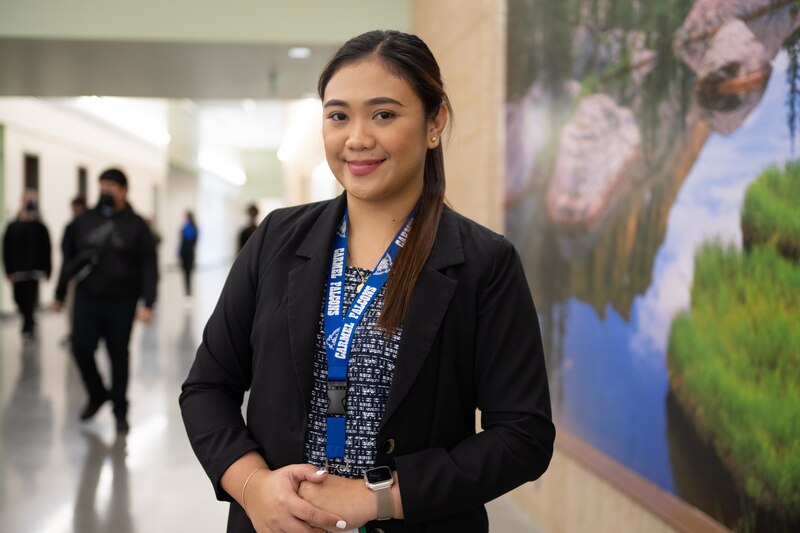
A path to cultural exchange, not immigration
This year, Harrison has nine Filipino teachers, with 33 more set to start in the fall. Most of them teach math, science, or special education, with a few serving as speech-language pathologists or occupational therapists. In total, Filipino teachers will make up about 7% of the district’s teacher workforce next year.
Like many international teachers, Oyson is in the United States on a J-1 visa, which is designated for educational and work exchanges — not as a route to immigration. The visa is also available to professors, medical students, nannies, and camp counselors. For teachers, the visa is good for three years, with the option to extend to five.
“This is a temporary visa,” said Nelson Molina, executive director of program development at the Global Ambassador Programs, which sponsors J-1 visa holders on behalf of districts. “It’s not for immigration purposes. It’s for cultural exchange.”
Molina said to be eligible for a J-1 visa, teachers must have a bachelor’s degree and at least two years of full-time teaching experience in their home countries. School districts are required to pay visiting teachers the standard salary given to American teachers with the same education and experience.
Molina’s organization sponsors J-1 teachers from about 34 countries, including Spain, France, England, the Philippines, and Mexico, on behalf of school districts in 10 states. In Colorado, Global Ambassador Programs works with four districts, including Harrison, Fort Lupton, and two mountain districts, Eagle County and Summit.
The Colorado Department of Education doesn’t track the number of Colorado teachers with J-1 visas. They can apply for one of three types of state credentials, including a three-year initial teacher license, a seven-year professional teachers license, or a one-year “Exchange Educator Interim Authorization.”
Adele Wilson, chief human resources officer in the 6,600-student Eagle County district, said her district has hired international teachers for years — from Mexico, Chile, Colombia, Argentina, and Spain, among others. This year, around 60 of the district’s 500 teachers are from abroad, including a few from the Philippines.
Most international teachers fill bilingual teaching positions in Eagle County, where about half of students are Hispanic and 30% are English learners.
“In the state of Colorado, it has been tremendously challenging to find bilingual candidates,” said Wilson.
At teacher job fairs, where school district booths are often arranged alphabetically, she said Eagle is often next to Denver and Douglas County, districts where the pay is higher and where housing — while not cheap — may be somewhat more affordable.
“The housing piece is a real stumbling block for us,” said Wilson.
For International teachers, who stay for a few years and don’t have families with them, it’s a little easier.
“They’re a little more OK with kind of living dorm-style, having roommates,” Wilson said.
International teachers face different student dynamics
For many international teachers, it’s surprising at first how students in the United States behave in school compared to students in their home countries.
“In other countries, a teacher is on the same level as an attorney, as a doctor,” said Wilson, adding that some international teachers working in American classrooms are “just flabbergasted that kids can get away with some of the things they get away with.”
It gave Oyson culture shock when she first arrived in Colorado Springs.
“It’s just so different from our children in the Philippines,” she said. “In terms of behavior, we don’t have kids that are cursing everywhere … They listen to the teacher all the time, minimal behavior problems over there.”
During Oyson’s first week in the classroom at Carmel Community School, she was very strict, gradually relaxing the rules in weeks two and three. She said she also tried to look at the situation from a different perspective and ”embrace the culture of the kids.”
Today, she has close bonds with some of her students and is excited to serve as a mentor to the 33 Filipino teachers arriving this summer, including two good friends she taught with previously.
Living and teaching in the United States wasn’t easy at first. Oyson was homesick — missing the humidity of the Philippines, the beach, and her husband among other things. But she also grew to appreciate the experience — better-equipped American classrooms, friendly people, and road trips to Denver, Breckenridge, Vail, and Santa Fe, New Mexico.
“I love it here,” she said. At the same time, Oyson is clear-eyed about the challenges. “You need to be tough. You need to adjust to be a master of what you do.”
Ann Schimke is a senior reporter at Chalkbeat, covering early childhood issues and early literacy. Contact Ann at aschimke@chalkbeat.org


